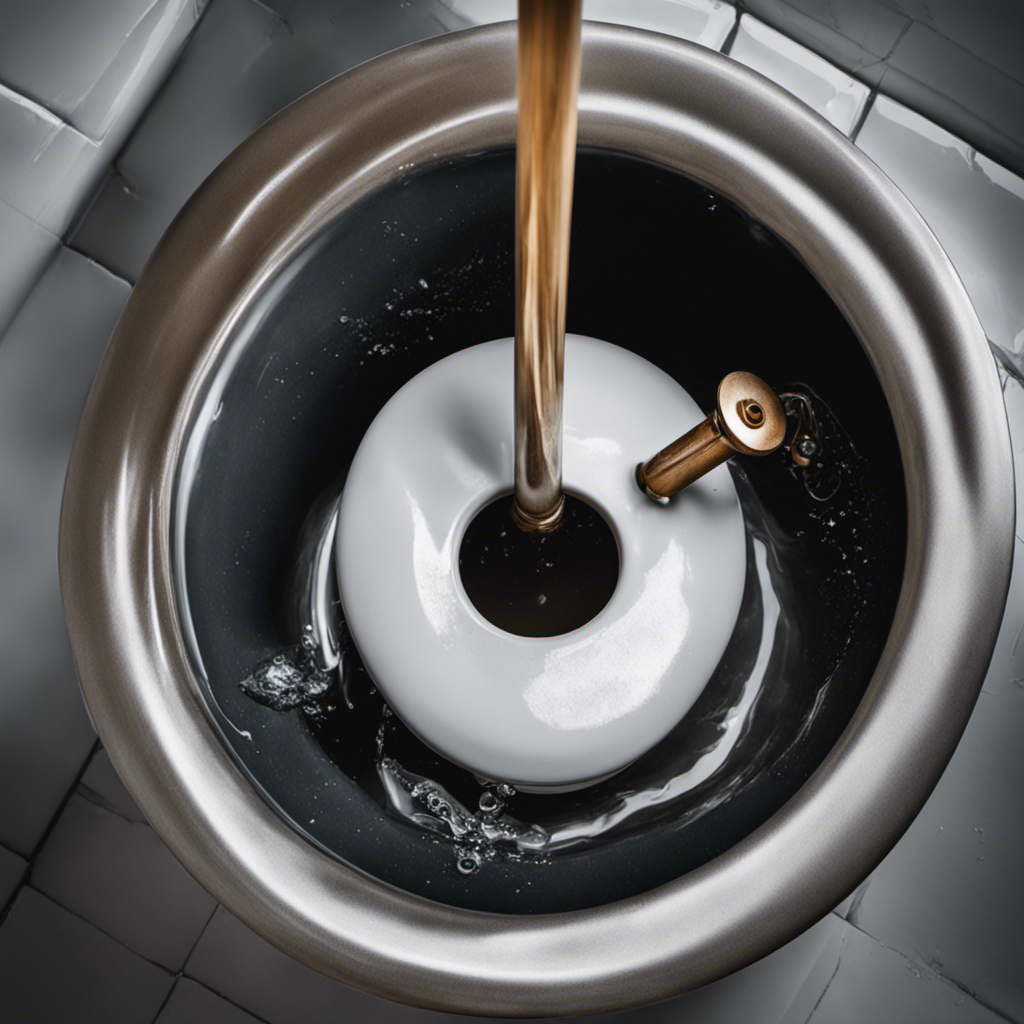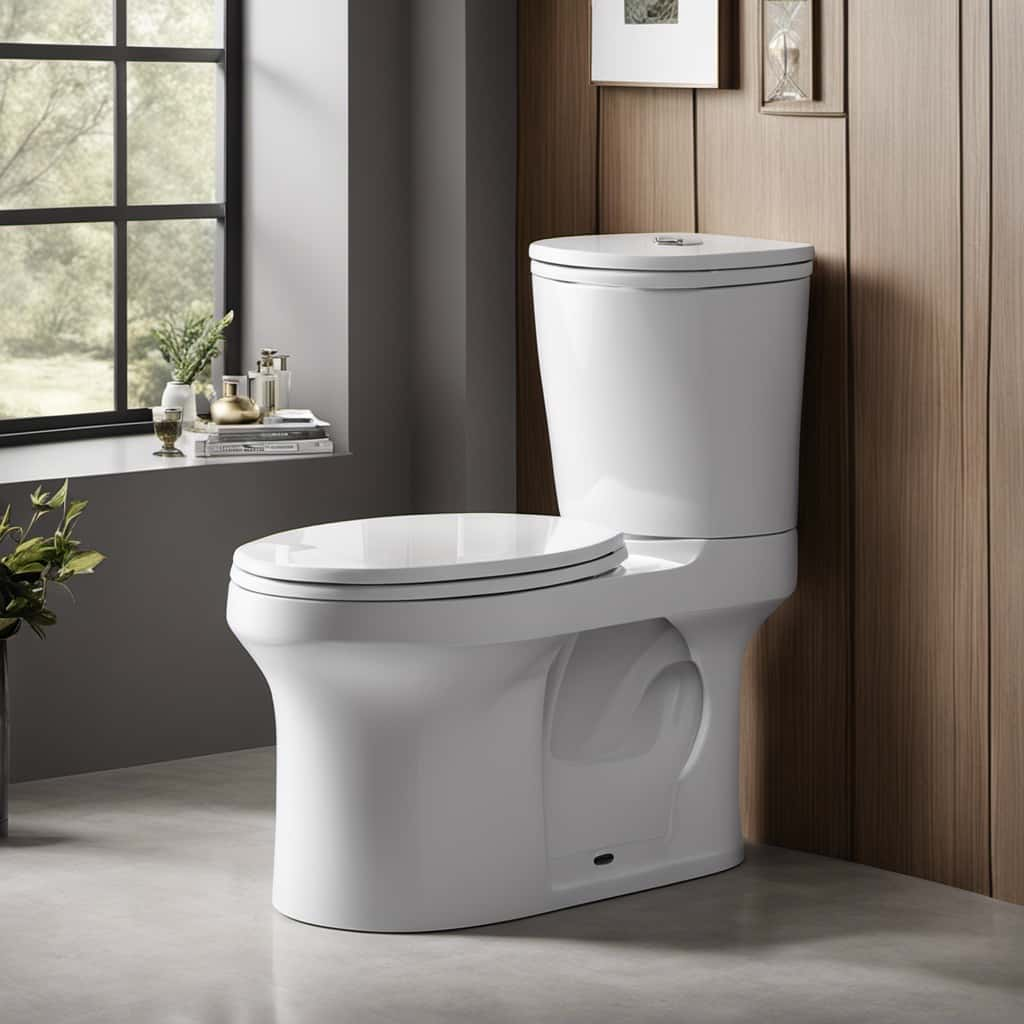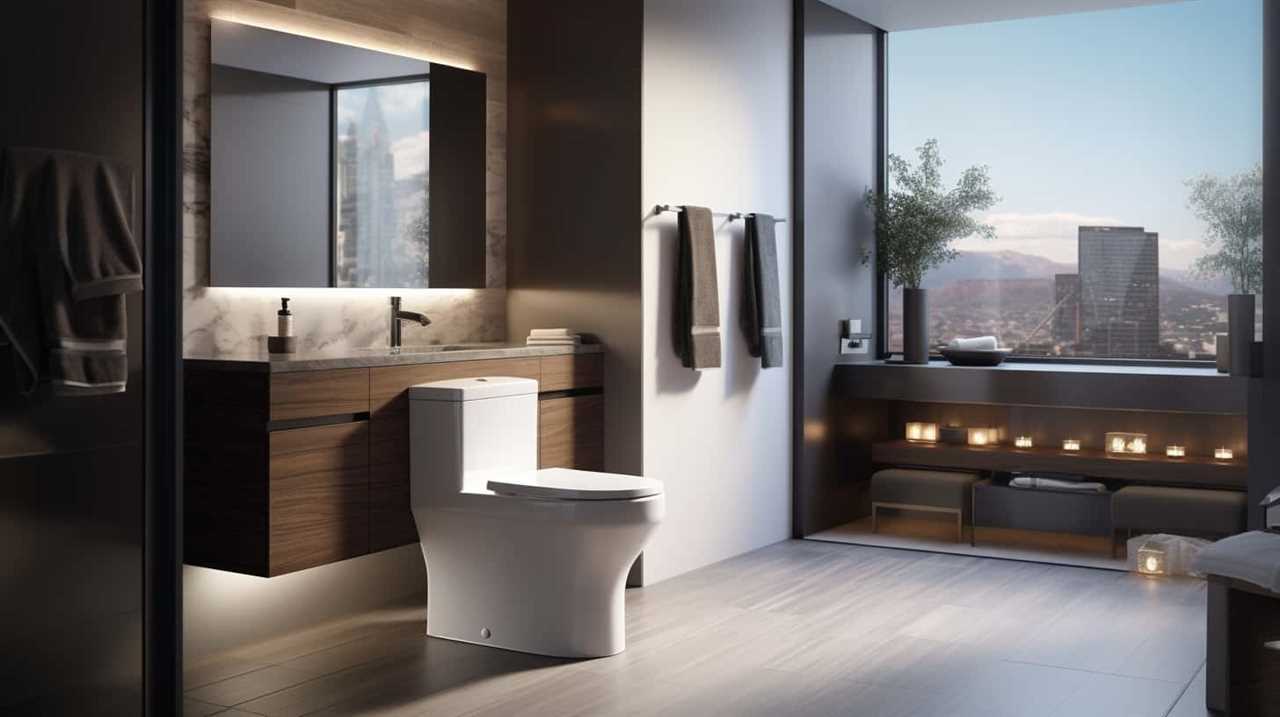As someone who has experienced the frustration of a non-flushing toilet, I understand the urgency and inconvenience it brings.
Picture this: you’re in a rush, and the toilet just won’t cooperate. But fear not! In this article, I will delve into the common causes behind a stubborn toilet, provide practical solutions to unclog it, and shed light on the essential role of the flapper in the flushing process.
Get ready to tackle toilet troubles head-on with expert tips and preventive measures.
Key Takeaways
- Clogged pipes due to objects like toilet paper, sanitary products, or excessive waste can cause a toilet to not flush properly.
- Inadequate water pressure can also result in a toilet not flushing effectively.
- Using a plunger, toilet auger, or hot water and dish soap can help unclog a toilet.
- Regularly checking and replacing the flapper, as well as troubleshooting the toilet flush mechanism, can prevent flushing issues.
Common Causes for a Non-Flushing Toilet
One common cause for your toilet not flushing is a clogged pipe. When the toilet bowl is not emptying properly, it could be due to an obstruction in the pipe that carries waste away. This can occur when objects like toilet paper, sanitary products, or excessive amounts of waste build up and block the flow of water.
Another factor that can affect the flushing mechanism is inadequate water pressure. Insufficient water pressure can prevent the toilet from properly flushing, as the force needed to push the waste through the pipes is reduced.
It is important to address these issues promptly to ensure that your toilet functions properly and to avoid potential plumbing problems in the future.
How to Fix a Clogged Toilet
To fix a clogged toilet, you can try using a plunger. This is one of the most common and effective toilet unclogging methods. Start by positioning the plunger over the drain hole, ensuring a tight seal. Then, using a firm and steady up-and-down motion, create suction to dislodge the clog.
If the plunger doesn’t work, you can try using a toilet auger or a plumbing snake. These DIY toilet repair tools are designed to reach deeper into the drain and break up stubborn clogs. Remember to follow the manufacturer’s instructions when using these tools.
Additionally, you can attempt a homemade remedy by pouring hot water and dish soap into the toilet bowl. This can help dissolve minor clogs.
However, for more severe clogs or recurring issues, it is advisable to call a professional plumber.
Understanding the Role of the Flapper in Flushing
If you’re experiencing issues with flushing, a common culprit may be the flapper, which is responsible for controlling the water flow in the toilet tank. The flapper is a crucial component of the toilet flush mechanism, as it creates a seal that prevents water from continuously flowing into the bowl. Over time, the flapper can become worn out or damaged, resulting in problems with flushing. To ensure proper flapper maintenance, it is important to regularly check for any signs of wear and tear, such as cracks or leaks. If any issues are detected, it is recommended to replace the flapper with a new one. There are various flapper replacement options available, including universal flappers that fit most toilet models. By taking care of the flapper, you can ensure a smooth and efficient flushing process.
| Flapper Maintenance | Flapper Replacement Options |
|---|---|
| Regularly check for signs of wear and tear, such as cracks or leaks | Universal flappers that fit most toilet models |
| Clean the flapper and surrounding area to remove any debris or buildup | Adjustable flappers that allow for customization |
| Ensure that the flapper chain is properly adjusted and not too tight or too loose | Dual-flush flappers that provide water-saving options |
| Consider using flapper repair kits to fix minor issues | Specialty flappers for specific toilet brands or models |
With proper flapper maintenance and the right replacement option, you can effectively resolve issues with flushing and maintain a well-functioning toilet. Now, let’s delve into troubleshooting the toilet flush mechanism to further diagnose and fix any problems that may arise.
Troubleshooting the Toilet Flush Mechanism
When troubleshooting the toilet flush mechanism, it’s important to check the water level in the tank. The water level in the tank affects the overall flushing performance of the toilet. If the water level is too low, it can cause a weak flush or even prevent the toilet from flushing at all.
To check the water level, remove the tank lid and observe the water level mark on the inside of the tank. If the water level is below the mark, adjust the float or fill valve to increase the water level.
Another common issue with the toilet flush mechanism is a faulty flush handle. If the handle is loose or not engaging properly, it can prevent the toilet from flushing correctly. Make sure the handle is securely attached and properly aligned with the flush valve.
Troubleshooting the toilet tank can help identify and fix these issues, ensuring a properly functioning flush mechanism.
Expert Tips for Preventing Toilet Clogs
One way to prevent toilet clogs is by being mindful of what you flush down the drain. It’s important to remember that toilets are designed for human waste and toilet paper. Anything else can cause blockages and costly plumbing repairs.
To ensure an efficient plumbing system and avoid clogs, consider the following tips:
- Avoid flushing feminine hygiene products, baby wipes, or paper towels, as they can easily cause clogs.
- Dispose of grease and cooking oil properly, rather than pouring them down the drain, as they can solidify and obstruct the pipes.
- Use eco-friendly toilet options like low-flow toilets, dual-flush toilets, or composting toilets. These not only help prevent clogs but also conserve water and reduce environmental impact.
Conclusion
In conclusion, when faced with a non-flushing toilet, it’s important to understand the common causes and how to fix them.
By knowing how the flapper plays a crucial role in flushing and troubleshooting the toilet flush mechanism, you can confidently tackle any clog.
Remember, prevention is key! Regular maintenance and avoiding flushing inappropriate items down the toilet will save you from future headaches.
So, don’t let a clogged toilet throw a wrench in your plans. Take the plunge and keep things flowing smoothly!










